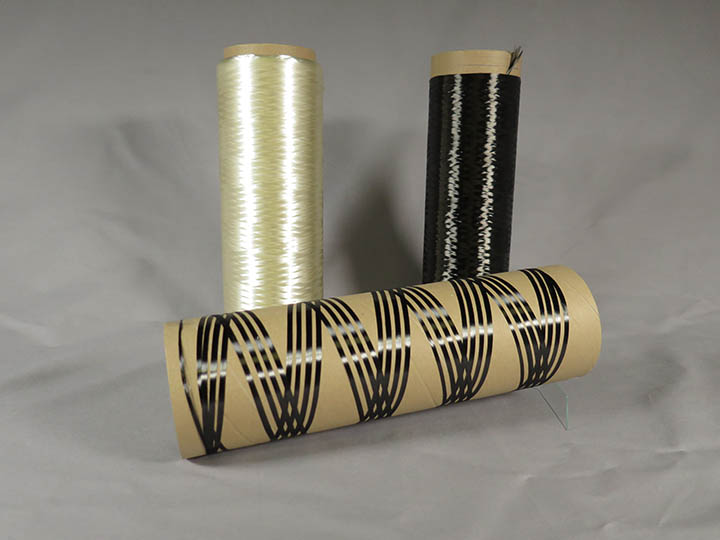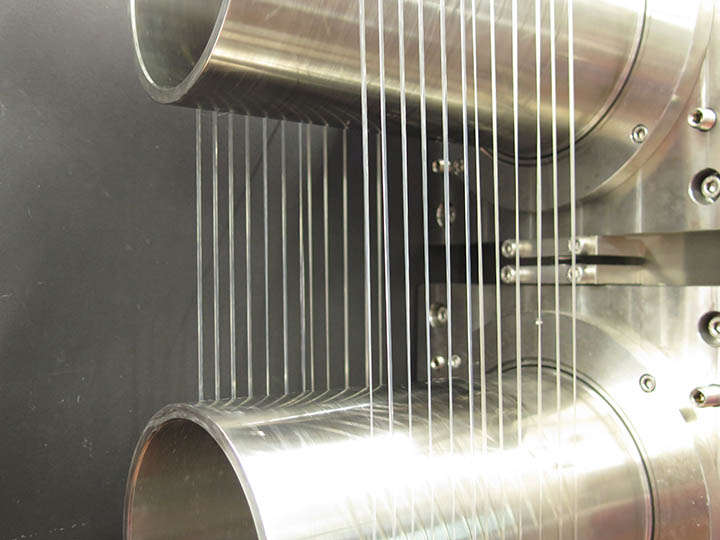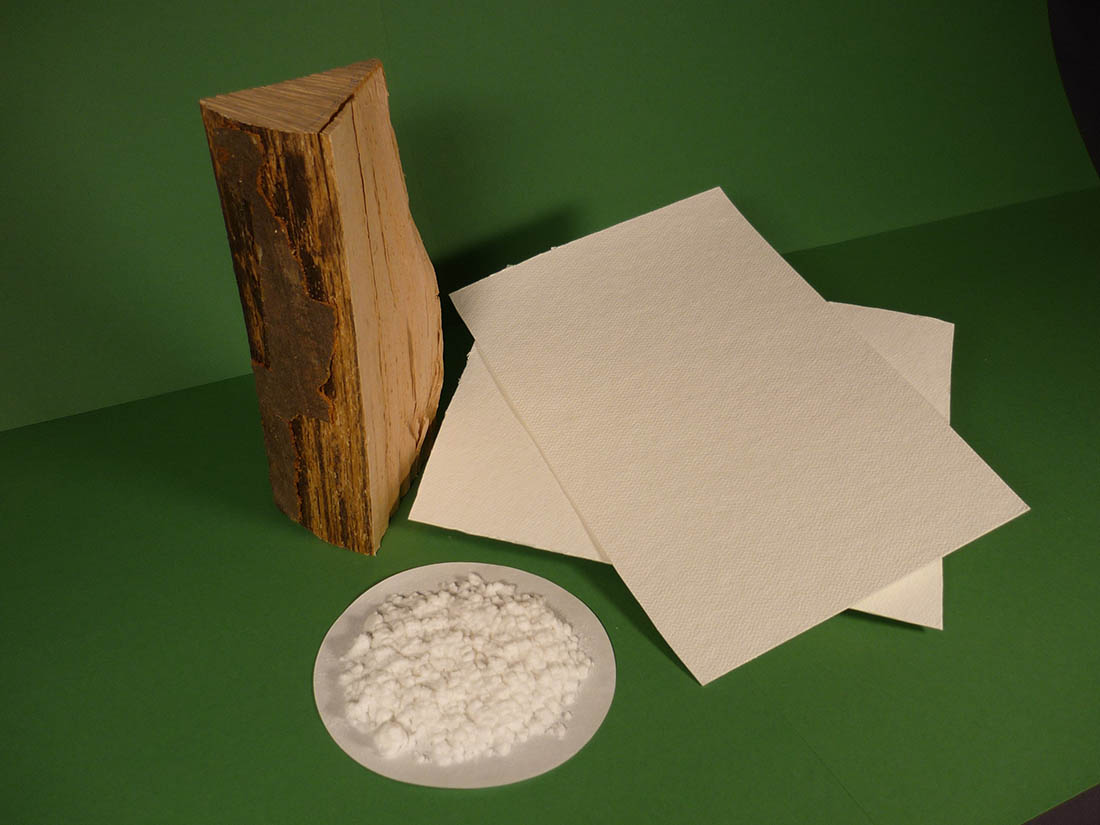Global fiber production in 2019 was 111 million tonnes. This figure has more than doubled over the past 20 years and is expected to increase by another 30% to 146 million tonnes in 2030 if business continues as normal.
Meanwhile, there has been a renewed interest in wood-based fibers in recent years – manmade cellulosic fibers (MMCFs) had a global production volume of 7 million tonnes and a market share of 6.4% in 2019.
MMCFs include viscose, acetate, lyocell, modal and cupro. Viscose staple fibers have the highest share of 79% followed by cellulose acetate and lyocell.
There is huge interest in alternative, sustainable production technologies based on ionic liquids (ILs) to produce cellulosic fibers. A novel process for the production of high-performance endless cellulose fibers has been developed at the German Institutes of Textile and Fiber Research Denkendorf (DITF).
Viscose concerns
Concerns around viscose production include the chemical-intensive manufacturing process and the risk of damage to the local environment in instances where production is handled irresponsibly.
On the other hand, the lyocell process operates in a “closed loop,” which means that most of the water and solvent in the process are recycled for reuse. Here, an organic solvent – N-Methylmorphine N-oxide (NMMO) – is used as an alternative to carbon disulfide (CS2) to dissolve wood pulp.
The compound annual growth rate of lyocell from 2017 to 2022 is estimated at 15%; therefore, lyocell is expected to grow faster than other MMCFs.
A special class of MMCF are endless filament fibers, which are produced using a special viscose process that has similar above-mentioned problems. Highly toxic CS2 is used as a derivatization reagent to form cellulose xanthate, which is necessary to dissolve cellulose in aqueous sodium hydroxide. The viscous solution containing about 8 wt% of cellulose is spun into a coagulation bath containing zinc salts, sodium sulfate and sulfuric acid.
Alternative production technologies
There is huge interest in alternative, sustainable production technologies based on ionic liquids (ILs) to produce cellulosic fibers. A novel process for the production of high-performance endless cellulose fibers has been developed at the German Institutes of Textile and Fiber Research Denkendorf (DITF).
The patented HighPerCell technology can create this new type of regenerated cellulose fiber as an environmentally friendly alternative to the industrially used viscose process [1].
Here, cellulose is directly dissolved in appropriate ILs and spun into a water-based coagulation bath without the addition of stabilizers. Notably, these IL-based spinning dopes can either be processed by wet spinning or dry-jet wet spinning, allowing modification of fiber properties according to the desired application. Up to 20 wt% cellulose can be dissolved, creating new possibilities to process cellulose.

Waste product
Cellulose/chitin blend fibers with up to 90% chitin have also been developed with the HighPerCell technology using chitin (shrimp shells) as a waste product from the food industry.[2]
ILs are ecologically safe as they are neither toxic nor flammable. Further, they are characterized by good mass efficiency owing to their easy and almost complete recyclability after the spinning process.
And owing to their thermal and chemical stability, nonflammable nature and miscibility with many other solvent systems, IL technology provides an economic and environmentally friendly way for the chemical modification and processing of cellulose and cellulose-based materials: these aspects make ILs optimal solvents for large-scale technical applications in terms of a sustainable circular economy.
High strength
HighPerCell fibers are characterized by high strength comparable to lyocell and tire cord. Owing to these properties, HighPerCell fibers are destined for use in technical applications. Fiber cross-sections and dimensions (super-microfibers), as well as fibrillation properties, can be controlled by process conditions, and microplastic release to soil or water is not an issue for this fiber class. Possible applications range from reinforcing materials in composites to the production of carbon fibers (HighPerCellCarbon) with outstanding material properties.[3]
Carbon fibers made from cellulose are a cost-effective and environmentally friendly alternative to non-sustainable petroleum-based carbon fibers. Recently, DITF Denkendorf started a cooperation with the newly founded Technikum Laubholz for the pilot production of HighPerCell and HighPerCellCarbon fibers.

Fashion interest
In addition to technical HighPerCell fibers, textile and apparel applications are also of relevance for this innovative technology. The interest in MMCFs among brands has several dimensions. On the one hand, fashion brands and retailers are giving increased thought to the issue of fiber use (and blends) generally for a variety of financial, sustainability and regulatory reasons. Moreover, while cotton and polyester remain the dominant fiber types used in apparel, neither is without its challenges. Thus, brands are increasingly open to looking at new and novel fiber types.
Feedstock origin
Also of interest are feedstock origin and alternatives. There are many cellulose-rich plants (for instance, bast fibers, nettles and miscanthus) that are fast-growing species and need no water or pesticides. These can serve as an additional source or even an alternative to wood-based fibers being applied in the HighPerCell technology.
Further, the current Horizon 2020 project HEREWEAR is looking for an alternative to cotton and DITF Denkendorf is responsible for the spinning of cellulosic filaments from bio-based waste streams and marine waste, such as seaweed, manure, and straw, applying the HighPerCell technology.

Textile waste recycling
Another ongoing topic is the recycling of textile waste, which has increased by 811% from 1960 to 2015. The proportion of “recycled” MMCFs was estimated at less than 1% in 2019. However, much research and development are ongoing, so this is expected to increase significantly in the next few years.
Waste fabrics, old clothing and cuttings from regenerated cellulose fibers or cotton are useful feedstocks. Instead of disposing them in landfill or by thermal recycling, they can be processed into new cellulose fibers using the HighPerCell technology.
Since IL-derived cellulosic fibers have at least similar, and in many cases superior, properties compared with conventional cellulosic fibers, industrial utilization seems quite probable in the near future. Indeed, a stepwise fiber substitution in the textile and technical field seems possible.
References
- D. Ingildeev, F. Effenberger, K. Bredereck, F. Hermanutz, J. Appl. Polym. Sci., 2012, 128 4141–4150; J. M. Spörl, A. Ota, S. Son, K. Massonne, F. Hermanutz, M.R. Buchmeiser, Mater. Today Commun., 2016, 7, 1-10; F. Hermanutz, M.P. Vocht, N. Panzier, M.R. Buchmeiser: Macromol. Mater. Eng., 2019, 304, 1800450; F. Hermanutz, M.P. Vocht, M.R. Buchmeiser, in: M.B. Shiflett (Ed.), Commercial Applications of Ionic Liquids, Springer International Publishing, Cham, 2020, pp.227-259; M.P. Vocht, R. Beyer, P. Tomasic, A. Müller, A. Ota, F. Hermanutz, M.R. Buchmeiser, Cellulose 2021, 28, 3055–3067.
- K. Mundsinger, A. Müller, R. Beyer, F. Hermanutz, M.R. Buchmeiser, Carbohydr. Polym, 2015, 131, 34–40; A. Ota, R. Beyer, U. Hageroth, A. Müller, P. Tomasic, F. Hermanutz, M.R. Buchmeiser, Polym. Adv. Techn. 2021, 32, 335-342.
- J. M. Spörl, R. Beyer, F. Abels, T. Cwik, A. Müller, F. Hermanutz, M.R. Buchmeiser, Macromol. Mater. Eng. 2017, 1700195.


